Thecaffiend - Thecaffiend
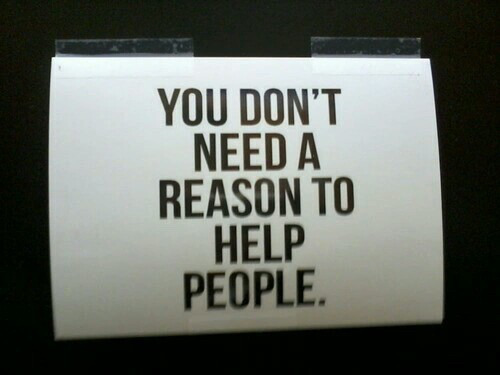
More Posts from Thecaffiend and Others
“Why does the third of the three brothers, who shares his food with the old woman in the wood, go on to become king of the country? Why does James Bond manage to disarm the nuclear bomb a few seconds before it goes off rather than, as it were, a few seconds afterwards? Because a universe where that did not happen would be a dark and hostile place. Let there be goblin hordes, let there be terrible environmental threats, let there be giant mutated slugs if you really must, but let there also be hope. It may be a grim, thin hope, an Arthurian sword at sunset, but let us know that we do not live in vain.”
— Terry Pratchett, “Let There Be Dragons” (A Slip of the Keyboard)
“[Keanu] Reeves said a recent conversation about “The Matrix” with a 15-year-old put things into a terrifying perspective. The actor explained to the teenager that his character, Neo, is fighting for what’s real. The teenager scoffed and said, “Who cares if it’s real?” “People are growing up with these tools: We’re listening to music already that’s made by AI in the style of Nirvana, there’s NFT digital art,” Reeves said. “It’s cool, like, Look what the cute machines can make! But there’s a corporatocracy behind it that’s looking to control those things. Culturally, socially, we’re gonna be confronted by the value of real, or the non-value. And then what’s going to be pushed on us? What’s going to be presented to us?” “It’s this sensorium. It’s spectacle. And it’s a system of control and manipulation,” Reeves continued. “We’re on our knees looking at cave walls and seeing the projections, and we’re not having the chance to look behind us.””
—
Keanu Reeves Slams Deepfakes, Film Contract Prevents Digital Edits - Variety
6 Ways NASA Technology Makes You Healthier
An important part of our mission is keeping astronauts strong and healthy during stays in space, but did you know that our technology also helps keep you healthy? And the origins of these space innovations aren’t always what you’d expect.
As we release the latest edition of NASA Spinoff, our yearly publication that celebrates all the ways NASA technology benefits us here on Earth, let’s look at some ways NASA is improving wellness for astronauts—and everyone else.
1. Weightless weight-lifting

Without gravity to work against, astronauts lose bone and muscle mass in space. To fight it, they work out regularly. But to get them a good burn, we had to get creative. After all, pumping iron doesn’t do much good when the weights float.
The solution? Elastic resistance. Inventor Paul Francis was already working on a portable home gym that relied on spiral-shaped springs made of an elastic material. He thought the same idea would work on the space station and after additional development and extensive testing, we agreed.
Our Interim Resistive Exercise Device launched in 2000 to help keep astronauts fit. And Francis’ original plan took off too. The technology perfected for NASA is at the heart of the Bowflex Revolution as well as a new line of handheld devices called OYO DoubleFlex, both of which enable an intensive—and extensive—workout, right at home.
2. Polymer coating keeps hearts beating

A key ingredient in a lifesaving treatment for many patients with congestive heart failure is made from a material a NASA researcher stumbled upon while working on a supersonic jet in the 1990s.
Today, a special kind of pacemaker that helps synchronize the left and right sides of the heart utilizes the unique substance known as LaRC-SI. The strong material can be cast extremely thin, which makes it easier to insert in the tightly twisted veins of the heart, and because it insulates so well, the pacemaker’s electric pulses go exactly where they should.
Since it was approved by the FDA in 2009, the device has been implanted hundreds of thousands of times.
3. Sutures strong enough for interplanetary transport

Many people mistakenly think we created Teflon. Not true: DuPont invented the unique polymer in 1938. But an innovative new way to use the material was developed to help us transport samples back from Mars and now aids in stitching up surgery patients.
Our scientists would love to get pristine Martian samples into our labs for more advanced testing. One complicating factor? The red dust makes it hard to get a clean seal on the sample container. That means the sample could get contaminated on its way back to Earth.
The team building the cannister had an idea, but they needed a material with very specific properties to make it work. They decided to use Polytetrafluoroethylene (that’s the scientific name for Teflon), which works really well in space.
The material we commonly recognize as Teflon starts as a powder, and to transform it into a nonstick coating, the powder gets processed a certain way. But process it differently, and you can get all kinds of different results.
For our Mars sample return cannister prototype, the powder was compressed at high pressures into a block, which was then forced through an extruder. (Imagine pressing playdough through a mold). It had never been done before, but the end result was durable, flexible and extremely thin: exactly what we needed.
And since the material can be implanted safely in the human body—it was also perfect as super strong sutures for after surgery.
4. Plant pots that clean the air

It may surprise you, but the most polluted air you breathe is likely the air inside your home and office. That’s especially true these days with energy-efficient insulation: the hot air gets sealed in, but so do any toxins coming off the paint, furniture, cooking gas, etc.
This was a problem NASA began worrying about decades ago, when we started planning for long duration space missions. After all, there’s no environment more insulated than a spaceship flying through the vacuum of space.
On Earth, plants are a big part of the “life support” system cleaning our air, so we wondered if they could do the same indoors or in space.
The results from extensive research surprised us: we learned the most important air scrubbing happens not through a plant’s leaves, but around its roots. And now you can get the cleanest air out of your houseplants by using a special plant pot, available online, developed with that finding in mind: it maximizes air flow through the soil, multiplying the plant’s ability to clean your air.
5. Gas sensor detects pollution from overhead

Although this next innovation wasn’t created with pollution in mind, it’s now helping keep an eye on one of the biggest greenhouse gasses: methane.
We created this tiny methane “sniffer” to help us look for signs of life on Mars. On Earth, the biggest source of methane is actually bacteria, so when one of our telescopes on the ground caught a glimpse of the gas on Mars, we knew we needed to take a closer look.
We sent this new, extremely sensitive sensor on the Curiosity Rover, but we knew it could also be put to good use here on our home planet. We adapted it, and today it gets mounted on drones and cars to quickly and accurately detect gas leaks and methane emissions from pipelines, oil wells and more.
The sensor can also be used to better study emissions from swamps and other natural sources, to better understand and perhaps mitigate their effects on climate change.
6. DNA “paint” highlights cellular damage

There’s been a lot of news lately about DNA editing: can genes be changed safely to make people healthier? Should they be?
As scientists and ethicists tackle these big questions, they need to be sure they know exactly what’s changing in the genome when they use the editing tools that already exist.
Well, thanks to a tool NASA helped create, we can actually highlight any abnormalities in the genetic code with special fluorescent “paint.”
But that’s not all the “paint” can do. We actually created it to better understand any genetic damage our astronauts incurred during their time in space, where radiation levels are far higher than on Earth. Down here, it could help do the same. For example, it can help doctors select the right cancer treatment by identifying the exact mutation in cancer cells.
You can learn more about all these innovations, and dozens more, in the 2019 edition of NASA Spinoff. Read it online or request a limited quantity print copy and we’ll mail it to you!

I think people need to understand that part of living a healthy life is having different people who understand different parts of you, so that you don’t overwhelm your friends and expect too much of them, or ignore valuable relationships because they feel “incomplete”.
We all want to be fully seen and understood, but it’s not shallow or meaningless to just have a pal you talk about TV shows with who isn’t also, like, your platonic soulmate. That’s still your friend! You still enhance each other’s lives with your company. Not everything that matters is profound.
I think a lot of you are lonely because you’re waiting around for someone who sees into your soul instead of just plain old lookin’ at the people in your life, finding common ground, and planting a little garden there. Even if that garden only grows Star Trek fan theories and memes, it’s still good.
It just… makes me real sad that you guys can’t imagine a friendship where you don’t talk about sex and trauma constantly, or that you think these are prerequisites for “real” friendship. Like, it legitimately breaks my heart.
I realized why the idea of constellations has always swayed me. constellations are so very human.
our wonder of the stars is bone-sunk; we’ve been thinking and dreaming and watching and watching and watching since the beginning of time, and we looked for so long that we started making connections.
we played a celestial game of connect-the-dots; trying to find order in something so vast and trying to show that the stars are in everything and everything is in the stars.
we plucked pictures out of the infinite; there’s a dog, there’s a bear, there’s a lion, see? look, right there; the stars hold and mirror back everything.
but then it went a step further. instead of everyday things, we stopped picking out the cups and the bears, and instead we saw stories.
look, there’s Andromeda, chained to a rock and waiting to be devoured by Cetus. there’s Orion, and Hercules, and do you see Orpheus’ lyre? Zeus sent an eagle to retrieve it after Orpheus’ death and he placed it in the sky.
we did the most human thing imaginable: we wrote our stories into the stars. we filled the night sky; previously so vast, so unknowable; with our history. we forged connections to the stars and made it so our children will always know where they come from.
Your purpose in life is not to love yourself but to love being yourself.
If you goal is to love yourself, then your focus is directed inward toward yourself, and you end up constantly watching yourself from the outside, disconnected, trying to summon the “correct” feelings towards yourself or fashion yourself into something you can approve of.
If your goal is to love being yourself, then your focus is directed outward towards life, on living and making decisions based on what brings you pleasure and fulfillment.
Be the subject, not the object. It doesn’t matter what you think of yourself. You are experiencing life. Life is not experiencing you.
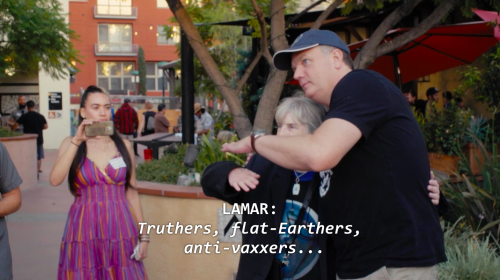
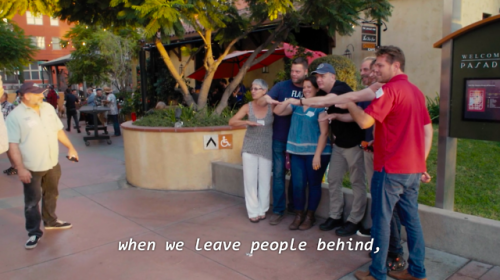
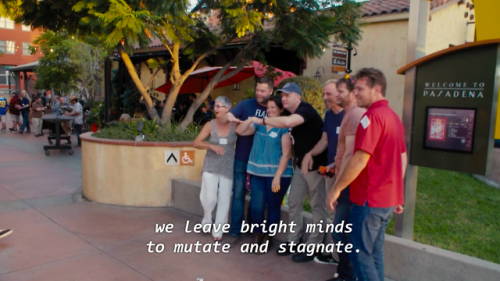
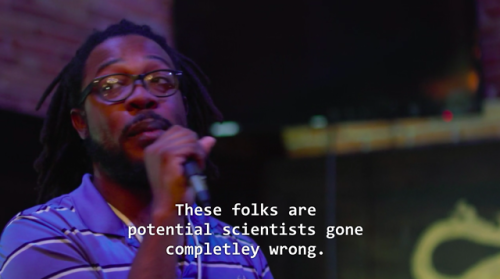
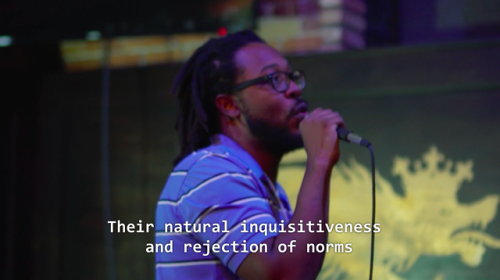
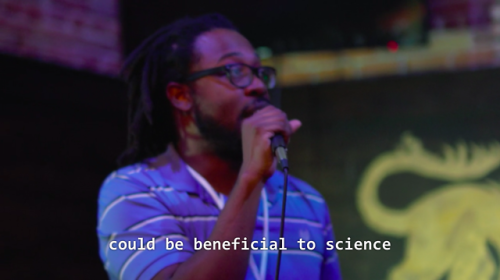
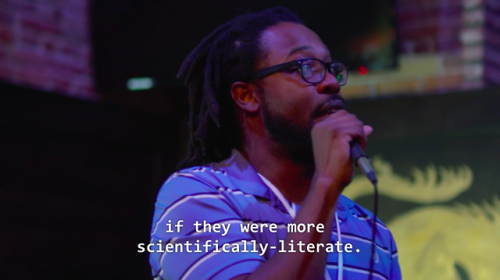
I really like what this physicist, Lamar Glover, has to say in Behind the Curve.
+ this part from Spiros Michalakis:

















-
 earthlingofpeace liked this · 2 weeks ago
earthlingofpeace liked this · 2 weeks ago -
 wilderyou liked this · 2 weeks ago
wilderyou liked this · 2 weeks ago -
 mythings18 reblogged this · 3 weeks ago
mythings18 reblogged this · 3 weeks ago -
 scentedartisanwinnercroissa-blog liked this · 3 weeks ago
scentedartisanwinnercroissa-blog liked this · 3 weeks ago -
 subcult-ure reblogged this · 4 weeks ago
subcult-ure reblogged this · 4 weeks ago -
 p-png-archive liked this · 4 weeks ago
p-png-archive liked this · 4 weeks ago -
 thisainthat liked this · 1 month ago
thisainthat liked this · 1 month ago -
 laydbck liked this · 1 month ago
laydbck liked this · 1 month ago -
 gradowicz liked this · 1 month ago
gradowicz liked this · 1 month ago -
 charlie-blew liked this · 1 month ago
charlie-blew liked this · 1 month ago -
 pshta2015 reblogged this · 1 month ago
pshta2015 reblogged this · 1 month ago -
 pshta2015 liked this · 1 month ago
pshta2015 liked this · 1 month ago -
 terrenced7 liked this · 1 month ago
terrenced7 liked this · 1 month ago -
 thischarmingman444 liked this · 1 month ago
thischarmingman444 liked this · 1 month ago -
 intusion liked this · 1 month ago
intusion liked this · 1 month ago -
 roundabouttotheedge reblogged this · 1 month ago
roundabouttotheedge reblogged this · 1 month ago -
 overcomencomeover liked this · 1 month ago
overcomencomeover liked this · 1 month ago -
 zxmxn reblogged this · 1 month ago
zxmxn reblogged this · 1 month ago -
 zxmxn liked this · 1 month ago
zxmxn liked this · 1 month ago -
 emptystruggles reblogged this · 1 month ago
emptystruggles reblogged this · 1 month ago -
 rorydbe liked this · 1 month ago
rorydbe liked this · 1 month ago -
 tsundokutepils reblogged this · 1 month ago
tsundokutepils reblogged this · 1 month ago -
 oninumber99 liked this · 1 month ago
oninumber99 liked this · 1 month ago -
 pop--pug reblogged this · 1 month ago
pop--pug reblogged this · 1 month ago -
 shit-fxck-damn reblogged this · 1 month ago
shit-fxck-damn reblogged this · 1 month ago -
 coopergriggs liked this · 2 months ago
coopergriggs liked this · 2 months ago -
 sad-bc-harry liked this · 2 months ago
sad-bc-harry liked this · 2 months ago -
 xerozero00 liked this · 2 months ago
xerozero00 liked this · 2 months ago -
 mythings18 liked this · 2 months ago
mythings18 liked this · 2 months ago -
 ether-xo liked this · 2 months ago
ether-xo liked this · 2 months ago -
 cleansmoothminimal liked this · 2 months ago
cleansmoothminimal liked this · 2 months ago -
 ric2008 liked this · 2 months ago
ric2008 liked this · 2 months ago -
 cinabunhugss liked this · 2 months ago
cinabunhugss liked this · 2 months ago -
 elvn17 reblogged this · 2 months ago
elvn17 reblogged this · 2 months ago -
 nensnackk reblogged this · 2 months ago
nensnackk reblogged this · 2 months ago -
 thedepressedpelican liked this · 2 months ago
thedepressedpelican liked this · 2 months ago -
 shakingthemangotree reblogged this · 2 months ago
shakingthemangotree reblogged this · 2 months ago -
 n0eonheart liked this · 2 months ago
n0eonheart liked this · 2 months ago -
 unfe-eling reblogged this · 2 months ago
unfe-eling reblogged this · 2 months ago -
 tonallyb-w reblogged this · 2 months ago
tonallyb-w reblogged this · 2 months ago -
 the-caveman-in-the-cloud liked this · 2 months ago
the-caveman-in-the-cloud liked this · 2 months ago -
 obe-yawn liked this · 2 months ago
obe-yawn liked this · 2 months ago -
 elle-mood reblogged this · 2 months ago
elle-mood reblogged this · 2 months ago -
 elle-mood liked this · 2 months ago
elle-mood liked this · 2 months ago -
 alwayselusivelove reblogged this · 2 months ago
alwayselusivelove reblogged this · 2 months ago -
 theflytrap liked this · 2 months ago
theflytrap liked this · 2 months ago -
 mikes81vw reblogged this · 2 months ago
mikes81vw reblogged this · 2 months ago -
 easily4gotten reblogged this · 3 months ago
easily4gotten reblogged this · 3 months ago -
 pete73sstuff liked this · 3 months ago
pete73sstuff liked this · 3 months ago
